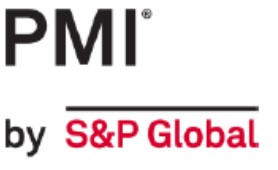The November data for the Purchasing Managers’ Index (PMI) data for manufacturing is, so far, generally moving in an upward direction but mostly still indicating that activity in the sector is contracting. Because the data is published today, our publishing schedules mean that we don’t yet have the data for any of the countries on the American continent or the global aggregate but we will update the download document later today with this data.
The UK reading of the manufacturing PMI improved to 47.2 in November; this is the best (least bad would be more accurate) level since April and was ahead of the flash figure that we reported last week, but it is still significantly negative. Output fell for the 9th consecutive month but at one of the slowest paces in that run and the downturn in new orders also slowed down during the month. By sector, output of consumer goods grew in November and although investment goods saw production fall for the 7th month in a row, this was at the slowest pace in that period – intermediate goods output decreased at the sharpest pace in nearly a year.
It is a similar picture in the Euro-zone where the PMI of 44.2 was its least negative reading for 6 months with output and new orders falling but at a moderated pace compared with recent months and business confidence (not part of the PMI calculation) edged up to a 3-month high. Among the 8 countries included in the Euro-zone figures, only Italy had a lower reading than in October, although France and Greece only improved very marginally. In addition, most of the countries still have a PMI below the crucial 50 level which marks the boundary between growth and contraction in activity in the sector – the exceptions were Greece at 50.9 and Ireland whose reading was exactly 50.0. Austria, Germany and France remain the most negative Euro-zone countries.
We see a similar trend among the other EU countries that have a PMI report with a higher reading compared to October but still well below the threshold in Czechia, Poland and Sweden. The exception here is Hungary where the PMI for manufacturing ticked down marginally but, at 52.2, it is one of the few countries to have a positive reading.
Finally in Europe, the PMI in Switzerland followed the general trend of being less bad than in October while still firmly in negative territory at 42.1 – indeed, this makes it the lowest among the countries/regions covered in this report. Meanwhile, Türkiye was among the few countries whose PMI reading fell, reaching its lowest point since November 2022.
With the Americas data not out until this afternoon, that just leaves Asia where we again see the general trend of an improvement compared to October but with a more varied outcome on the overall level. Starting with the exception, Japan was the only Asian country where the manufacturing PMI fell in the November report, meaning that it shares with Taiwan in having the lowest reading in the region. Elsewhere South Korea and the ASEAN block of countries saw their manufacturing PMI improve to exactly 50 with the index in China moving back into positive territory at 50.7. India remains the globally star performer with by far the highest PMI for manufacturing which, at 56.0, was also higher than the previous month.
You can download the individual S&P Global PMI reports their web-site at https://www.pmi.spglobal.com/Public/Release/PressReleases; we also have a summary report in the form of a series of charts which is attached below (this will be updated this afternoon). You should note that the PMI readings for Hungary, Sweden and Switzerland are not compiled by S&P Global but can be found with an appropriate internet search (it also means that they are not part of the global PMI calculation).

